For Ridge Racer Type 4 (R4) to succeed as more than just another console racing game it had to engage players on multiple levels. The graphics engine was as good as Namco had ever done for the Playstation and the control was spot-on. It was the heart of the experience that Namco would have to explore. Who was racing and why? It was a question not often asked by developers. Why should players go through the process of winning another virtual trophy? Why should they challenge themselves to try and unlock 320 cars? It turned out that the team managers would be the way to get players more involved. The four team managers were interested in winning the most prestigious prize in auto sports history, the Real Racing Roots '99 Trophy.
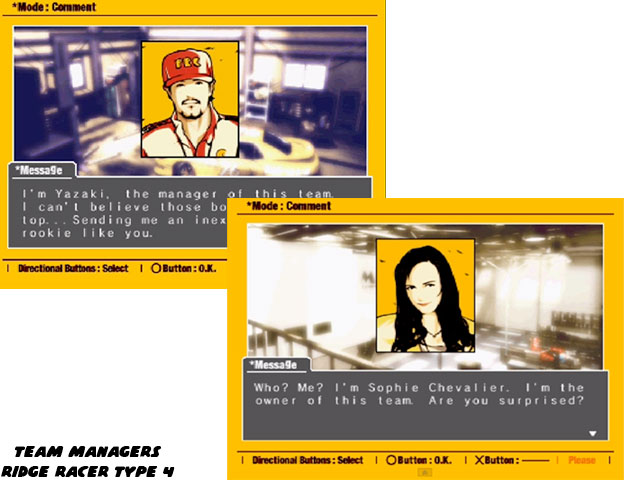
Of course the driving force was a prize that every driver wanted to earn. The four managers; Robert, Shinji, Eniki and Sophie had ulterior motives. As the game began they presented one side of their personality to players. They all appeared to be one-dimensional characters in the beginning, stereotypes of the respective American, Japanese, Italian and French way of running things. As the stages progressed more and more of their back story was revealed. They would praise a great performance or sulk if the racer did poorly. As the personalities were fleshed out players learned that these managers had a lot more than the success of the team riding on them. Despite how big or successful they were on a corporate level they were still vulnerable figures. The managers were looking for a big break, a second chance, self confidence or redemption. The developers at Namco had created an emotional connection between the players and their chosen team. These relationships could only be realized by going through the game again and again.
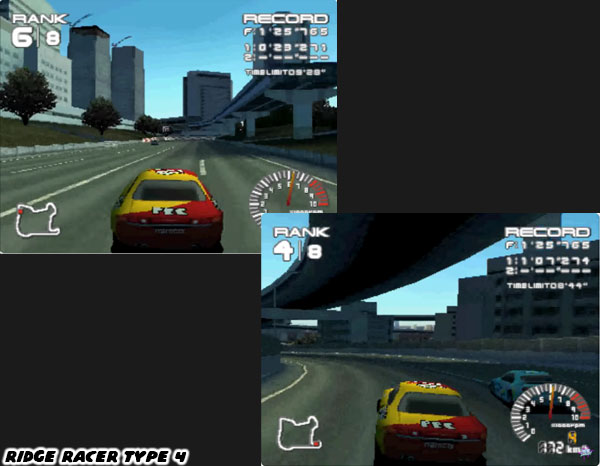
Drivers had to earn their cars the "hard way" they could not simply keep restarting a race in order to earn credits to buy them. The R&D group for each manufacturer would develop a new car based on the performance of the driver. If they were winning the majority of their races then R&D would go all out and introduce a car that had far more horsepower and a greater top speed. If the driver did moderately in each race then R&D would come up with a car that was only slightly better. It was as if the sponsors did not trust the driver with a superior car. The way that each car handled, whether it was drift type or grip type, depended on the manufacturer. Players did not suddenly have to change their style of driving during each upgrade. They did however have to learn the nuances of a more powerful car as they were racing. This was the sort of thing that actual professional race car drivers were expected to do. Adapting to change was a mandate for racing's "on the job" training.
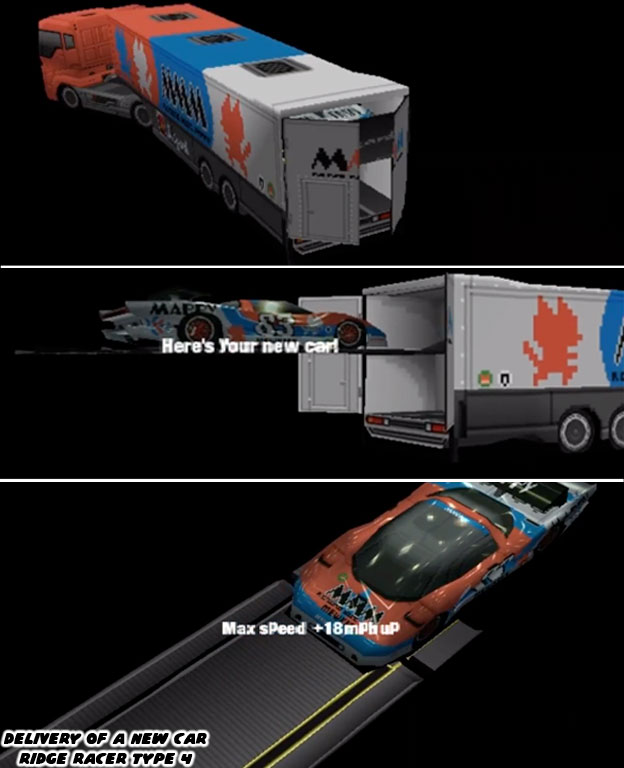
Namco did not miss a beat with any of the races. The real highlight of the game was in the final stage. The track "Shooting Hoops" in Los Angeles was a high point for console racing. Namco perfectly captured a moment and preserved it for gamers to enjoy. It was up to the player to make sure that the final race of the season would put their team on top. Since players had earned a new car just a race before they did not expect anything new for the final.
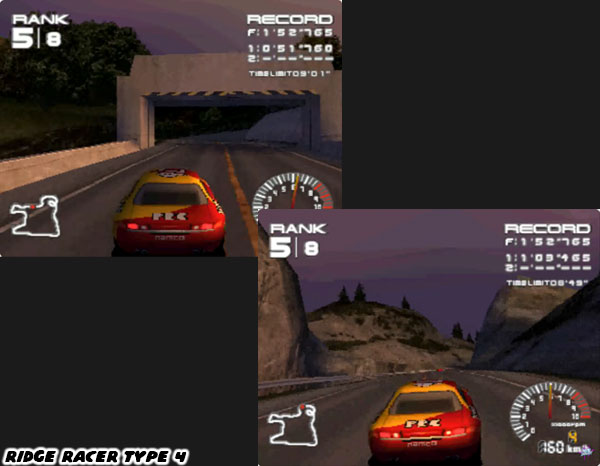
The manufacturers would surprise everyone by delivering their masterpiece, a super car that would out perform any previous model and perhaps be just enough to take home the gold. It was a good thing too because every other competitor would also be racing in their absolute best vehicle. Players raced a course that took place at the end of the season near midnight, symbolically the end of the millennium. The player learned that this course had to be played absolutely perfect in order to win. The slightest mistake in judging a turn would spell disaster and since players only had six laps it meant that they would have to learn the best lines as quickly as possible especially during the first lap itself.
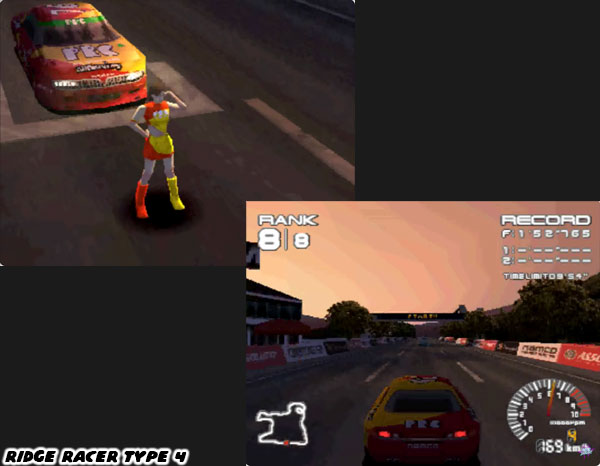
Shooting Hoops was designed so that the player could just drive as fast as they could and leave caution to the wind. The player could hold down the accelerator through the entire course and see what their ride was capable of. It was up to them to find the right angle of approach through every turn without ever pressing the brake. If a player lost any momentum on the track then there was no chance to recover against the other super cars. This type of final race planning was a sublime way to reward players. They had survived every previous circuit which required absolute concentration lap after lap.
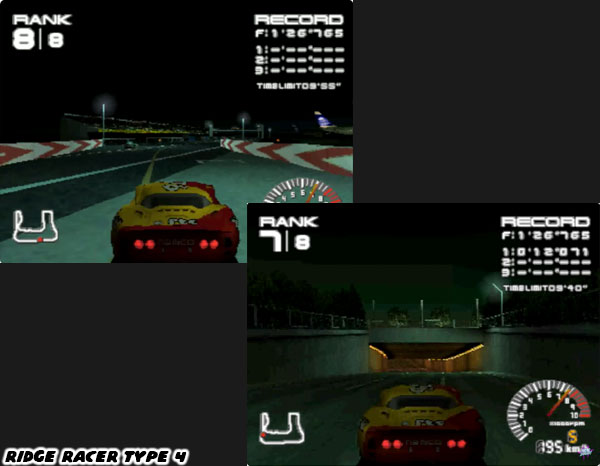
Putting the player in an all-or-nothing situation was the perfect final challenge. They had been trained by that point on how to adapt to the new course, new car and rival strategies. It was a way for players to demonstrate that they had become exceptional drivers in the process and even look good in the process. On the final lap, just as the player was about to catch up to and pass the final opponent the dark sky would light up with fireworks. The New Year was being celebrated with the crowning of a champion. It was enough to give long time players goosebumps. The final grand prix of 1999 would live on forever as the greatest race on Earth.
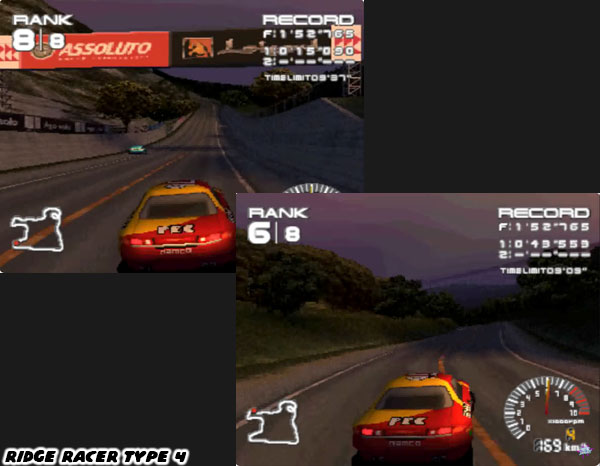
The benefits that the console had over the arcade were becoming manifest in R4. Players could pick the game up and race a few laps in arcade mode or set aside a few hours and go for a trophy in the Grand Prix mode. The limitations of the consoles were based on technology rather than programming. By the end of the '90s some of the most memorable gaming experiences could be found at home more so than in the arcade. While R4 could boast 8 tracks, several of these shared portions of roads, just like some of the circuits did in previous games. To help make the tracks more unique Namco placed the races during different times of the day. The studio also decided to take the player back and forth across the Pacific. Some of the tracks were in Yokohama and Fukuoka Japan, and some in New York and Los Angeles USA. Despite having layouts that were very similar to the tracks featured in Ridge City audiences were expected to accept that this was an international race.
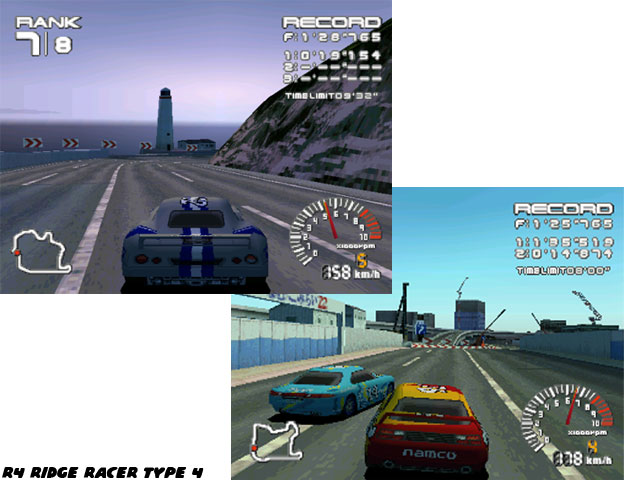
Players that committed themselves for a season of racing had the best racing experience in any console generation. The reason why was owed to how much time and energy the developers had invested into delivering the complete package. The graphics were amazing, control was perfect, introduction of team managers and manufacturers revolutionary. Namco found the perfect balance between the sim and arcade experience. It was a game that could be fun, challenging and even frustrating all in the same lap. Every following Ridge Racer game from Namco would be measured against R4. There were some surprises that Namco had held off to until the very end of the game. These things would become part of the Ridge Racer DNA for every following title. The next blog will look at the return of an icon.
As always if you would like to sponsor me
please visit my Patreon page and consider donating each month, even as little as $1 would help make better blogs and even podcasts!
















console vs arcade is like comparing anime show to a anime film.
ReplyDelete